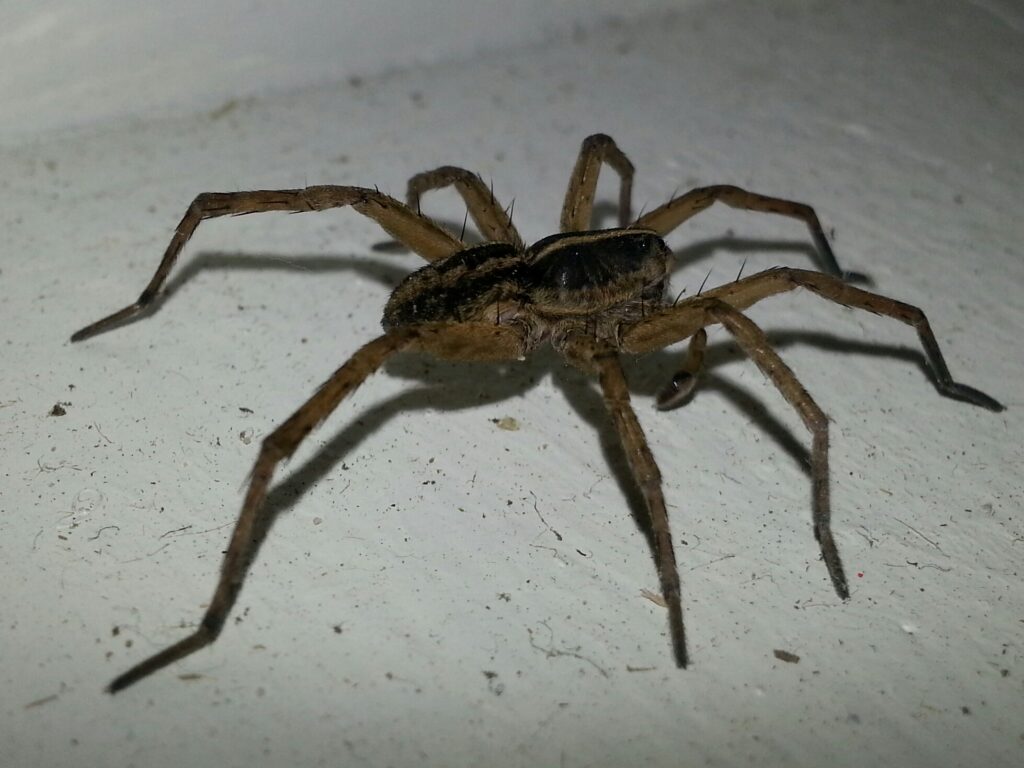 Within the vast field of Guelph pest control, understanding the intricacies of our eight-legged counterparts can be quite fascinating. One marvel of nature that constantly piques the curiosity of homeowners and scientists alike is spider silk. This extraordinary material has captivated the attention of many due to its remarkable properties - a testament to nature's ingenuity.
While homeowners might shudder at the thought of spiders, acknowledging the strength and potential benefits of spider silk can transform our perspective on these common household pests. With impressive strength, studies have shown how strong spider silk is — it actually rivals steel and Kevlar. It's a substance that speaks to evolutionary success, enabling spiders to craft webs, trap prey, and even travel through environments with masterful precision.
Our expertise addresses both the wonder of this natural wonder and the practical methods for managing these skilled weavers in your living space.
Within the vast field of Guelph pest control, understanding the intricacies of our eight-legged counterparts can be quite fascinating. One marvel of nature that constantly piques the curiosity of homeowners and scientists alike is spider silk. This extraordinary material has captivated the attention of many due to its remarkable properties - a testament to nature's ingenuity.
While homeowners might shudder at the thought of spiders, acknowledging the strength and potential benefits of spider silk can transform our perspective on these common household pests. With impressive strength, studies have shown how strong spider silk is — it actually rivals steel and Kevlar. It's a substance that speaks to evolutionary success, enabling spiders to craft webs, trap prey, and even travel through environments with masterful precision.
Our expertise addresses both the wonder of this natural wonder and the practical methods for managing these skilled weavers in your living space.
What Is Spider Silk, and Why Should You Care?
You may think of spider silk as merely a silken thread that the arachnids use to spin webs and catch prey, and you'd be partially right. However, the real story is richer, more complex, and far more invisible to the human eye. Silk is a marvel of nature, a substance spun under the commands of one of the planet's oldest predators. But for what purpose? Its uses are as diverse as they are impressive:- Webs as Strong as Steel: Orb-weaver spiders alone can produce seven different types of silk, each with a specific function. The orb nets are especially awe-inspiring, as certain silk varieties outmatch steel on a pound-for-pound basis.
- Parachutes and Life Lines: Arachnids don't just anchor themselves to webs; some can turn their silk into a glider. The balloon spiderlings dance in the wind, carried by threads that can withstand a variety of pulling forces.
- Venomous Silk: Some arachnid species use their silk to wrap their prey, which may have been envenomed previously. This silk contains chemicals that help immobilize and begin to digest the victim before the spider even touches it.
How Strong is Spider Silk?
To combat your eight-legged roommates, it's essential to comprehend what we're dealing with. Silk, predominantly composed of protein, is secreted from the spider's spinnerets, a unique organ found only in arachnids. Different spinneret glands produce a variety of silk types, all serving specific purposes. If you're already squinting at the corners of your ceiling, don't be surprised. The strength of spider silk is staggering. It's been a material of fascination for engineers who have tried, with limited success, to replicate its strength and elasticity.- Dragline Silk: This is the web's architectural backbone, responsible for its incredible durability. In fact, it's not uncommon for webs to better endure the elements than the tradesman's tools used to dismantle them.
- Aciniform Silk: Used for wrapping prey, this silk type is strong, dense, and often infused with toxins or storage proteins to aid in capturing and preserving food.
Truly Nolen's Pest Control Expertise
“How do we keep our house spider-free?” is a common question, and Truly Nolen has forged its reputation on the art of answering it. Our Integrated Pest Management (IPM) practices ensure that — spider or not — we address the cause of your arachnid dilemma while pledging to keep your family and the environment safe. Each property in Guelph is different, potentially playing host to a variety of spiders, each with unique behaviours and silk-spinning habits. Truly Nolen's pest control strategies are precise, considering the intricacies of your specific spider situation:- Exclusion: Sealing cracks and holes in your home is a first step in preventing entry. Often, spiders can be found near lighting, as it attracts their prey.
- Sanitation: Reducing potential food sources for the prey of spiders, such as other insects, can help diminish the population.
- Environment Modification: Outdoor vegetation can be a major draw. By managing your garden and outdoor lighting, we can deter spiders from loitering too close to your home's entry points.

Guelph's Spider Population — The Players
Guelph is not a city unfamiliar with spiders. From the granddaddies of the spider universe — the tarantulas — to the lords of the web — orb-weavers and their intricate, signature webs — a diverse array of spiders call this area home.Understanding the Web Spinners
Guelph’s most common residential spiders are not likely to bite unless provoked, and their venom is typically not harmful to humans. However, their presence can still be unnerving and, in the case of phobias or allergies, can lead to significant discomfort.- Common House Spider: You'll find this one just about anywhere, from the attic to the basement. They're the unsung custodians of the insect world but tend to overstay their welcome.
- Wolf Spider: These hunters routinely venture inside, looking for their next meal. Their burly appearance and fast movements can be startling.
- Yellow Sac Spider: With its pale coloration, it's often the unexpected 4-pm surprise in the living room. Their venom can lead to painful bites.
- Each of these spiders has distinctive silk-spinning techniques and preferences. Understanding these nuances allows us to determine the most effective means of control for each species.

